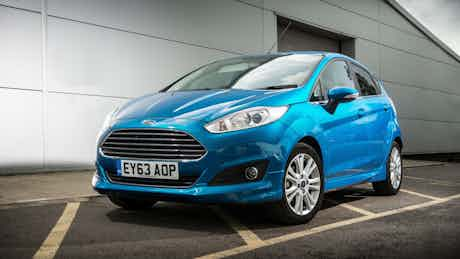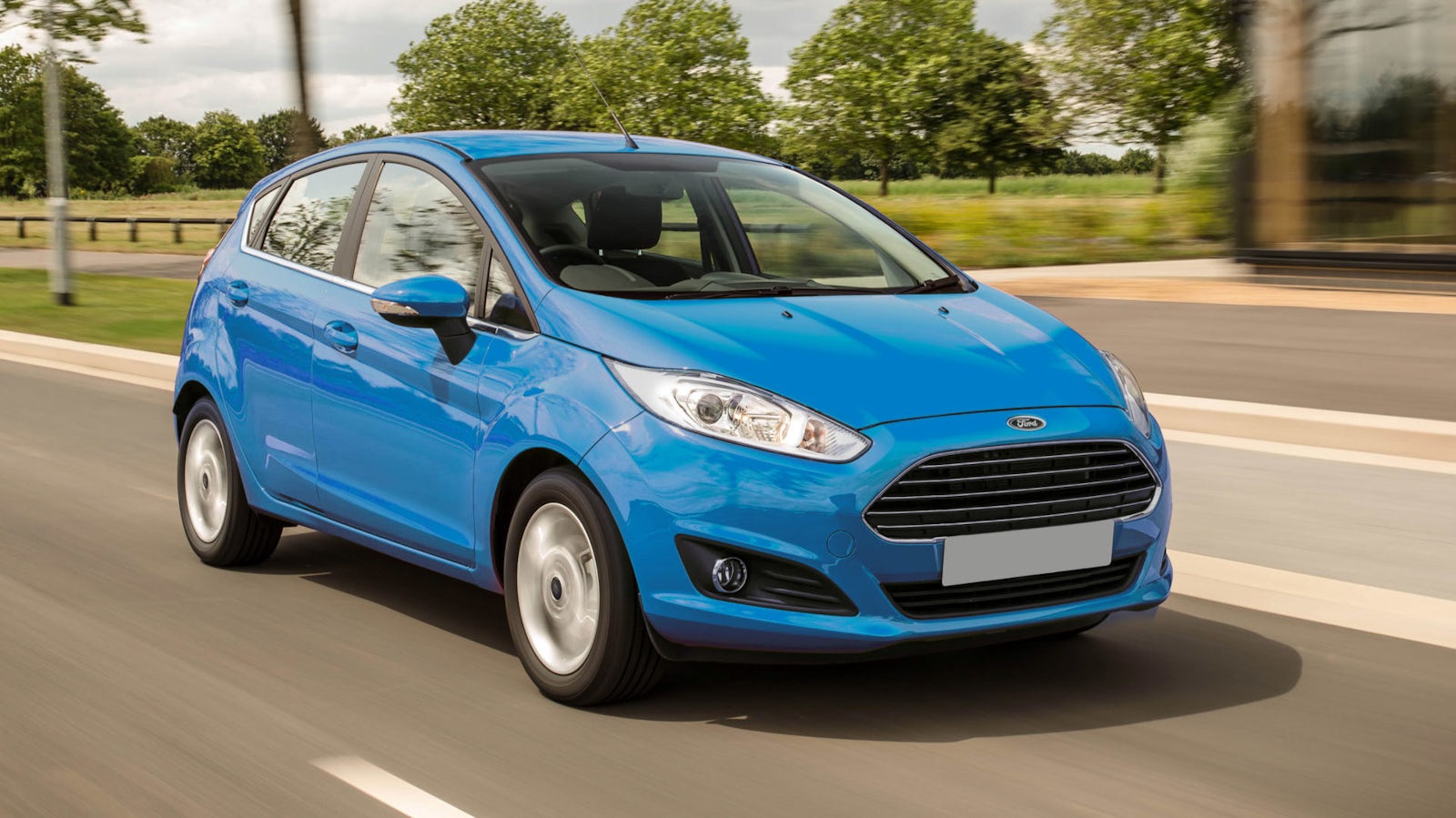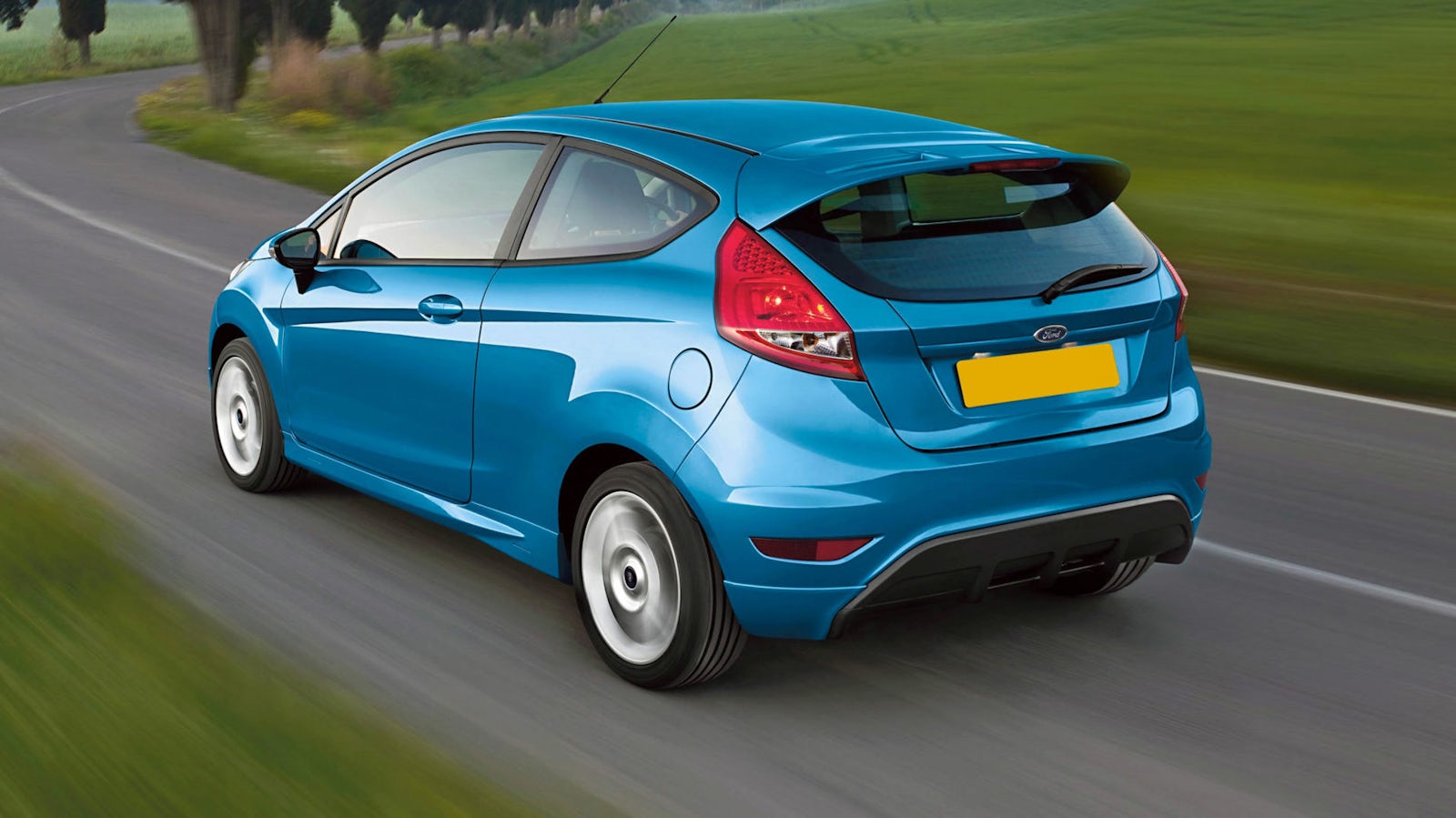Ford Fiesta (2008-2017) used buying guide
August 01, 2022 by Darren Cassey

Are you considering a used Ford Fiesta? This used buying guide will tell you everything you need to know.
The Ford Fiesta has enjoyed a long reign as Britain’s best-selling car, and the sixth generation model – introduced in 2008 – continued the winning recipe.
Until it was replaced by a new version in 2017 – via a mid-life refresh revealed in late 2012 – it barely took a break from the top of the new car sales charts, meaning you will always find plenty of used versions on sale.
It also means there are plenty of parts available that won’t cost the Earth, and you’ll struggle to find a garage that won’t have already worked on plenty of Fiestas, giving further peace of mind.
Ford Fiesta: Pros and cons
What’s good
1. Fun to drive
2. Excellent value for money
3. Low running costs
What’s not so good
1. Not the most practical
2. Cramped in the rear
3. Interior showing its age

Click any of the links below to jump to the relevant section.
Is a used Ford Fiesta a good car?
What body styles are available?
What are the engine options?
What trim levels are available?
How practical is it?
What’s it like inside?
What’s it like to drive?
What to look out for
Ford Fiesta recalls
Safety and security
What else should I consider?
Is a used Ford Fiesta a good car?
The Fiesta’s good looks and great value for money make it a winner, with its all-rounder status making it so appealing to small car buyers.

The styling has aged really well, particularly since the facelifted model was introduced in 2013. This saw a larger front grille fitted higher above the bumper, flanked by a tweaked headlight design and new LED daytime running lights.
Being a hatchback with smaller engines and low insurance costs, the Fiesta is ideal for younger drivers looking for their first car, as well as those who don’t need a tonne of space and typically travel shorter distances.
It will appeal to smaller families with young children, too, though you might outgrow the Fiesta in a few years.
What body styles are available?
The Ford Fiesta was only offered as a hatchback, though there are both three- and five-door versions available.
Naturally those looking for a sleeker, more stylish appearance will be drawn to the three-door, while those needing easier access to the rear will prefer the five-door.
If you’re after the sporty ST model, it’s only offered as a three-door, meaning you’ll have to sacrifice some practicality in search of performance.
But if practicality is key, there was a commercial version of the three-door called the Fiesta Van.
What are the engine options?
If low running costs are a key selling point then it’s hard to go wrong with the Fiesta, with all but the go-faster ST posting impressive fuel economy figures and competitive CO2 emissions.
On paper the 1.5-litre Econetic diesel engine is the most sensible, with a fuel economy figure of 88mpg and CO2 emissions of just 82g/km. Diesel remains better-suited to long distance driving, so bear this in mind.
If you drive inside London’s Ultra Low Emission Zone, it’s worth noting that pre-2015 diesels are not exempt from a daily charge. If you’re unsure, run the number plate through Transport for London’s online checker.
But use the Fiesta as the urban cruiser it was designed to be and a petrol engine is your best option. In post-2012 models, the turbocharged Ecoboost engines are the highlight – there’s a choice of 99hp and 125hp here, with the latter being our pick for its punchier response.
Although these engines rarely achieve the official economy figures (66mpg for the 125hp model) they’ll still sip fuel so you won’t spend your life (nor life savings) at the pumps.

In older models, there’s a 120hp 1.6-litre petrol that offers a good compromise between power and economy, though both the 1.25- and 1.4-litre engines offer a decent driving experience along with better fuel economy.
Some engines are limited by trim level, too. For example, the entry level 60hp, 1.25-litre petrol is only offered on the lower Studio and Style trims. It’s not recommended, though, thanks to its gutless performance.
The ST is the fastest Fiesta thanks to a 1.6-litre Ecoboost petrol making 182hp. Even this won’t be painfully expensive to run, though, with an official economy figure of 48mpg. Ford introduced the limited-edition ST-200 at the end of this generation, with this farewell hot hatch boosted to 200hp.
What trim levels are available?
On facelifted models there are six trim levels available (if you ignore a few special versions and the ST). The range kicks off with the Studio model and runs through Style, Zetec, Zetec S, Titanium and the range-topping Titanium X.
When new, the Studio was priced below £10,000 and as such doesn’t have an extensive list of equipment. That said, there are daytime running lights, electric front windows, and a radio with a CD player and auxiliary input.
Step up to Style and you’ll get that all-important air conditioning, as well as MyKey – an initiative introduced for this model targeted at parents who could limit aspects such as the speed and radio volume if a young driver wanted to take the wheel.
Check out Mat’s video review of the Ford Fiesta when it was new.
This Fiesta was also offered with the first iteration of Ford’s now-common Sync infotainment system. Available on Zetec models and above, it allowed you to make calls, control music and use voice commands – all basic features now but great for a small, inexpensive car at the time.
Top specification Titanium and Titanium X models get DAB radio, cruise control, climate control and sports seats.
Opt for the ST and the higher price for extra power and cornering ability also gets you more kit. The lower ST-2 models get air conditioning, alloy wheels, heated sports seats and traction control, while ST-3 adds cruise control and satellite navigation.
How practical is it?
Because of its small car dimensions, the Fiesta is naturally quite compact. However its boot capacity of 290 litres (or 974 litres with the rear seats folded down) makes it fairly competitive with similar cars from other brands, if not quite up there with the class leaders.

The reality of those numbers is that, with the rear seats in place, the boot is easily big enough to swallow a weekly shop or a few holiday bags. However, those wanting this as a small family car might want to test drive an example to see if the buggy will fit.
The rear seats have a 60/40 split, though, so you can create a little more space even with a child seat or rear passengers. There’s a small lip when you do this, though, so it can be tricky to slide longer items through.
With its family focus, the Fiesta makes up for any potential boot capacity issues with loads of interior storage. You’ll easily fit large water bottles in the door pockets and there’s a large glovebox, among various other cubby holes throughout the cabin.
What’s it like inside?
While the exterior design has stood the test of time, the same can’t be said for the interior. When it was introduced it impressed with its central infotainment display and sleek, two-tiered layout with sweeping wings each side.
Now, the button-festooned dashboard looks painfully dated, while the infotainment is comically small by today’s standards. Speaking of which, the Sync infotainment system is renowned for its fiddly, unintuitive layout.

There are some nice materials used on the dashboard, but some of the build quality elsewhere in the interior is questionable, so it’s worth pushing and prodding before buying to check nothing has come loose.
What’s it like to drive?
Ford has earned itself a reputation for building mainstream models that are among the best in their class to drive, and this Fiesta is no different.
You don’t have to be a keen driver to appreciate why this is important. The steering is light and direct, offering confidence in corners while also being easy to pilot through busy town traffic. Here, its upright proportions and large windows make visibility excellent for a car of its size.
Head out onto the motorway and it’s not quite as at home, lacking a touch of refinement at higher speeds, though nothing deal breaking. That’s not to say long trips should be avoided, either. Just expect to turn the radio up a notch or two…
The driving position is absolutely spot on, though, meaning you’ll get to your destination feeling fresh, while the seats are comfortable and supportive, particularly if you get a model with the sport seats.
What to look out for
The Ford Fiesta has a generally decent reliability record, while its sheer popularity means that most parts are inexpensive and easy to come by.
There are some complaints of issues with the 1.0-litre Ecoboost engines when they were first introduced, mainly relating to the turbocharger.
While out on the test drive, check for a subtle surge as you accelerate to indicate everything is working as it should. Those with a keen ear might also be able to listen for a slight whistle as the turbo kicks in, too. If the engine feels laboured under acceleration, it could indicate something is wrong.

Another engine issue, though far less common, relates to diesels, which can have injector failures that can cost a lot to fix. There are a few signs of this, including the engine misfiring, fluctuating revs while stationary, a smell of diesel and poor fuel economy.
There are complaints related to the clutch, too, so make sure gear changes are slick with no signs of slipping. You can spot this by listening for the engine revs rising without the speed increasing.
As it’s a city car, you should also check for scrapes and bumps, in particular those to alloy wheels that could have damaged the tyres.
Finally, the Fiesta is marketed as an inexpensive family car, so it doesn’t have the highest quality materials and could have spent years being pulled and prodded by kids. Go around the interior and check everything is still fixed securely without any obvious scrapes and scratches.
Ford Fiesta recalls
Recalls happen regularly in the car industry as the result of a manufacturer or the Driver and Vehicle Standards Agency (DVSA) finding an issue with a vehicle.
These are mostly preventative, and can be related to issues as wide-ranging as intermittent electrical faults to potential failures in major components. To check whether your vehicle is included in a recall you can type your VIN into the Ford website or contact your local Ford dealer.
You can read more about what recalls are in this handy guide, or continue below to see what recalls have been issued for the 2012-2017 Ford Fiesta…
Just over 9,000 vehicles built between September 23rd 2014 and November 11th 2014 could have a defective rear seat belt buckle catch that could leave the passenger unrestrained in the event of a frontal impact.

Inadequate welding that could result in the rear axle becoming detached was detected in 69 cars built on July 5th, 2016. A major issue, but you’d be really unfortunate to buy a car built on this day!
Finally, 15 vehicles built between February 26th 2016 and August 26th 2016 may have an issue with the driver’s seat belt, which could affect its performance in a collision.
Safety and security
The Fiesta received a five-star safety rating from Euro NCAP. Although testing standards have increased in recent years making it incomparable with modern scores, the hatchback was rated particularly well for adult and child occupant protection.
Electronic stability systems were introduced with the facelift on top of side, curtain and knee airbags, while Active City Stop, which applies the brakes if it detects an imminent collision below 30mph – was an option for the first time.
What else should I consider?
There are plenty of alternatives to consider in this segment, with each having their own characters and unique selling points. The Fiesta is considered one of the best all-rounders, but there are few major letdowns among its competitors.
The Volkswagen Polo has a subtly refined look, which extends inside, making it one of the better options for long distance driving. The Peugeot 208 isn’t particularly engaging behind the wheel, but has a slightly nicer cabin and decent ride quality.
If you like a bit more character there’s the Renault Clio, while the Skoda Fabia is more spacious inside and generally better-equipped.
In the Vauxhall Corsa you have the Fiesta’s biggest rival over the years, and at this time had seen the biggest leap in years, closing the gap between the two. It looks great, has some nippy engine choices and is more comfortable than the Ford, too. It just lacks a little in the fun-to-drive department.
If you’re interested in buying a used Ford Fiesta, you can find the latest stock from a network of trusted dealers. You can also sell your old car though carwow, and it’s quick and easy. Tap the button below to find out more.















